A country’s cuisine undoubtedly adds to the thrill and fun of travel. You’ll sample foods that look strange, emit a funny smell or whose name you can’t pronounce. Japan is where you can take your tastebuds for an adventurous ride and is most certainly a foodie’s haven.
It’s safe to say that food takes up a fair portion of our planned itineraries. This was our first time travelling to Japan together and so we compiled a Japanese foods list before our departure, researched the must eat restaurants in Japan and unashamedly (at the time) proceeded to engage in Japanese gluttony (our waistlines are certainly suffering).
Japanese food culture is intertwined with the country’s history, its people and everyday life. From slurping bowls of ramen noodles, crunching down on a piece of tonkatsu and nibbling on a green soybean, your umami palette will be sent into overdrive. To help you plan your eating escapades, we’ve pulled together a list of must try Japanese food in Tokyo and beyond. Just make sure to brush up on your chopsticks skills before you arrive!
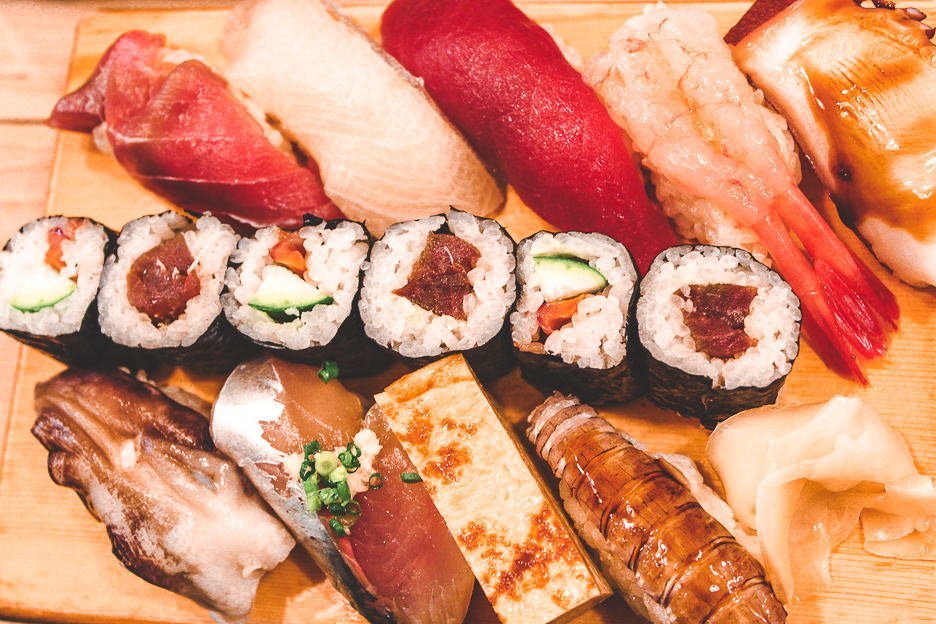
the best of japanese food culture
1. Sushi
Fair warning: you will not find chicken and avocado sushi rolls in Japan. In fact you won’t find chicken in any sushi in Japan because it is not a traditional sushi ingredient.
Sushi is traditionally made with medium-grain white vinegared rice and accompanied with a variety of ingredients but typically seafood (e.g. tuna, salmon, eel, squid) and vegetables. It is often served with pickled ginger, wasabi and soy sauce.
There are many different types of sushi and it’s likely that you have seen most of these variations including: nigiri (not to be confused with onigiri – see below), gunkan, norimaki, temaki and inari. True traditional Japanese sushi is quite expensive in Japan but trust us – once you eat it in Japan, the quality anywhere else in the world won’t compare!
Best Place To Eat Sushi in Tokyo:
Tsukiji Sushidai Honkan
Opening Hours
- Monday 10:30am - 4:00am
- Tuesday 10:30am - 4:00am
- Wednesday 10:30am - 4:00am
- Thursday 10:30am - 4:00am
- Friday 10:30am - 4:00am
- Saturday 10:30am - 4:00am
- Sunday 11:00am - 10:00pm
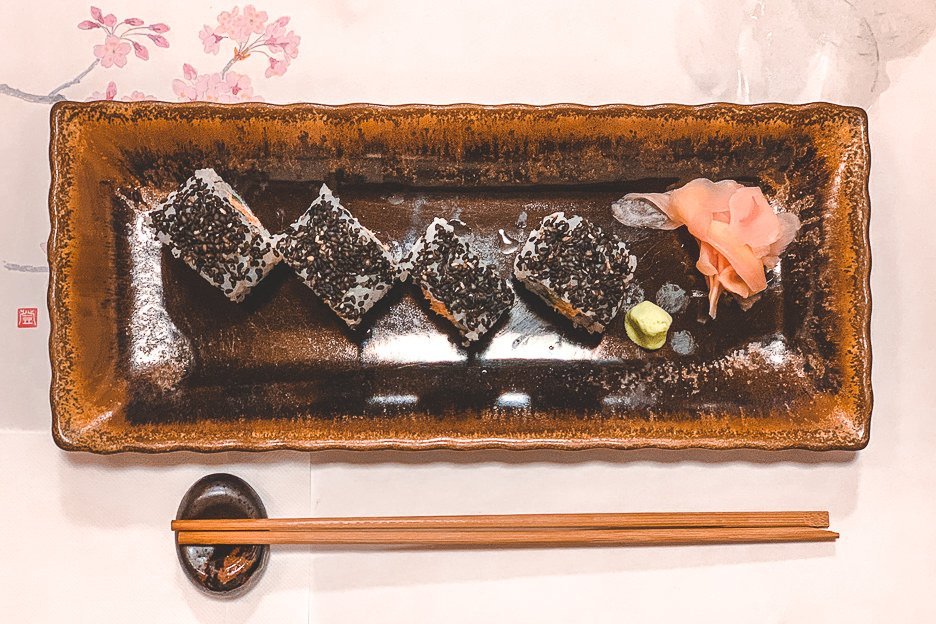
2. Ramen
Ah, the Japanese equivalent to a late night kebab. But really, does it need to be 6am in the morning after a drunken night out to enjoy ramen? We don’t think so. And luckily, ramen is the one Japanese food that you can actually eat at almost any time of the day or night in Japan.
“Ramen” translates to “pulled noodles”. The main ingredients are: Chinese wheat noodles, a meat or occasionally fish-based broth (tonkatsu is a popular pork bone broth), one of three basic ramen flavours: shio (salt), shoyu (soy sauce), and miso (fermented soybean paste), and toppings such as chāshū (pork), nori (dried seaweed) and a boiled egg.
Many restaurants have vending machines where you will place your order outside the establishment before taking your ticket to the restaurant host or chef. Often, you will have a full view of the kitchen and can watch the chefs prepare your ramen.
Best Place To Eat Ramen in Tokyo:
Tsuta
Opening Hours
- Monday 11:00am - 5:00pm
- Tuesday 11:00am - 5:00pm
- Wednesday 11:00am - 5:00pm
- Thursday Closed
- Friday 11:00am - 5:00pm
- Saturday 11:00am - 5:00pm
- Sunday 11:00am - 5:00pm
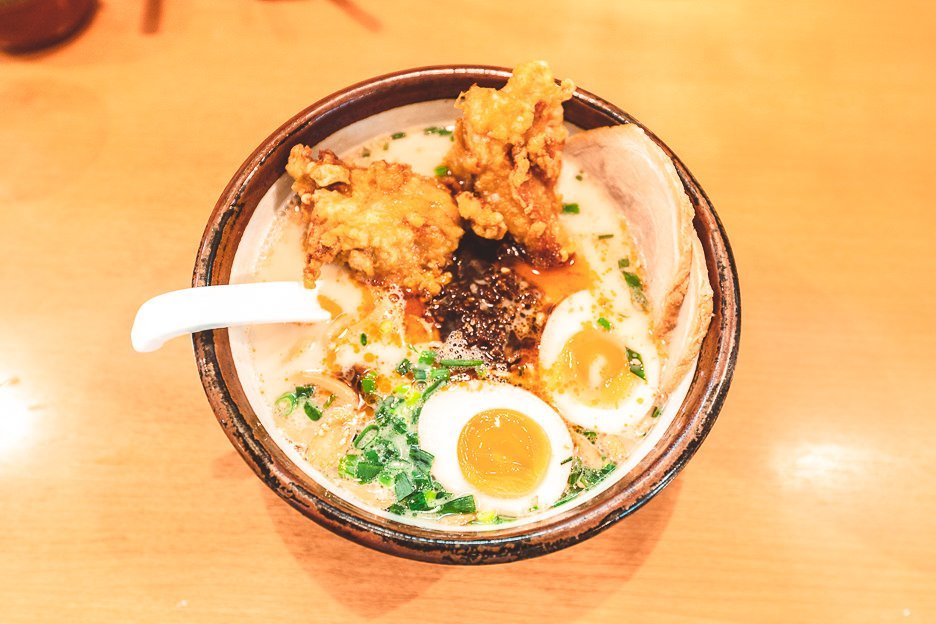
3. Tonkatsu
Deep fried goodness in Bevan’s opinion. Sorry vegetarian friends.
Tonkatsu is a Japanese dish consisting of a breaded, deep-fried pork cutlet. The two main types are fillet (leaner meat) and loin (fatty and lardy but generally has more flavour). This popular dish is served with a Japanese tonkatsu sauce (ketchup, Worcestershire sauce and soy sauce – sometimes a bit of chilli), rice, miso soup, thinly sliced cabbage and pickles. More often than not, your rice and cabbage are refillable – free of charge.
Best Place To Eat Tonkatsu in Tokyo:
Butagami
Opening Hours
- Monday Closed
- Tuesday 11:30am - 3:30pm, 6:00pm - 10:30pm
- Wednesday 11:30am - 3:30pm, 6:00pm - 10:30pm
- Thursday 11:30am - 3:30pm, 6:00pm - 10:30pm
- Friday 11:30am - 3:30pm, 6:00pm - 10:30pm
- Saturday 11:30am - 3:30pm, 6:00pm - 10:30pm
- Sunday 11:30am - 3:30pm, 6:00pm - 10:30pm
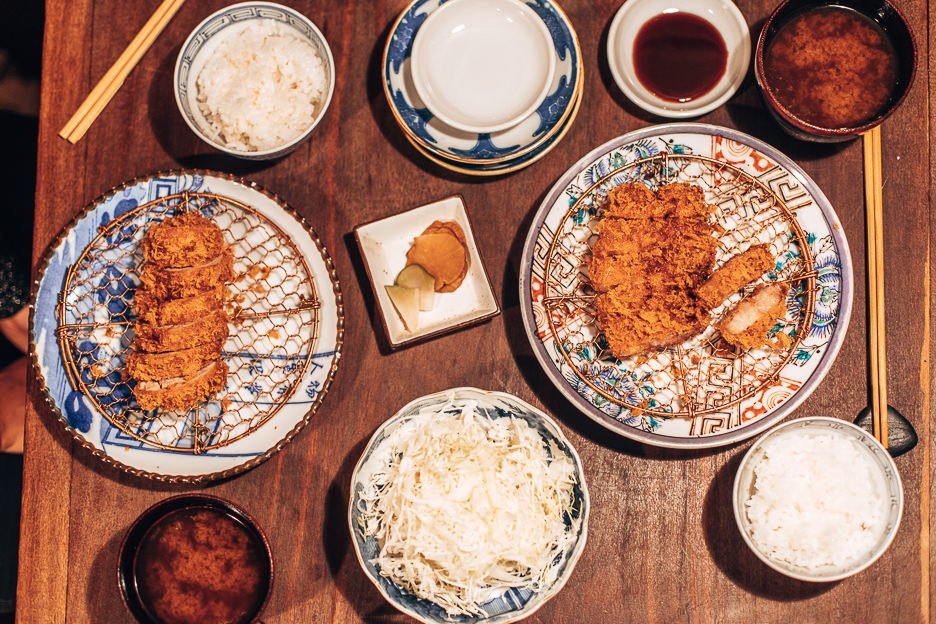
4. Green Tea / Matcha
While the Western world revels in the health benefits of matcha, Japan can look back on its century-long history with the concentrated form of green tea. The traditional Japanese tea ceremony centres on the preparation, serving and drinking of hot matcha tea but in modern times, it has been used to flavour a range of foods, predominantly desserts. In Japan, matcha can be found in pudding, cakes, biscuits, ice-cream, chocolate (green tea Kit Kats are something else!), mochi – we even came across matcha-flavoured croissants at a bus terminal!
We are not huge fans of matcha ourselves but Japan is THE place to try matcha flavoured desserts you’re unlikely to find at home!
Best Matcha Latte in Tokyo:
Streamer Coffee Company
Opening Hours
- Monday 8:00am - 6:00pm
- Tuesday 8:00am - 6:00pm
- Wednesday 8:00am - 6:00pm
- Thursday 8:00am - 6:00pm
- Friday 8:00am - 6:00pm
- Saturday 10:00am - 6:00pm
- Sunday 10:00am - 6:00pm
5. Yakitori
The bar snack of Japan. Cheap, flavoursome and the possibility of trying a little bit of everything.
Yakitori is a Japanese type of skewered meat, traditionally chicken, grilled over a charcoal fire. The meat is skewered with kushi, a bamboo or steel skewer, grilled and then seasoned. Yakitori seasonings are typically salty or salty sweet. The salty seasoning is usually just plain salt. For the salty-sweet variety, tare sauce is used – a combination of mirin, sake, soy sauce and sugar.
In Tokyo, the most popular spots to eat yakitori are at Memory Lane in Shinjuku or at Yakitori Alley in the Ginza neighbourhood. These laneways are frequented by locals and tourists and is a cool spot to watch the chefs cook the yakitori and wash down the salty food with an Asahi. You can also eat yakitori at izakayas. During our time in Japan, there were odd occasions when we would also have a couple of pieces of leek charred amongst the meat but we usually did not see skewered vegetables on the menu.
Best Place To Eat Yakitori in Tokyo:
Any bar along Yakitori Alley, Memory Lane in Shinjuku
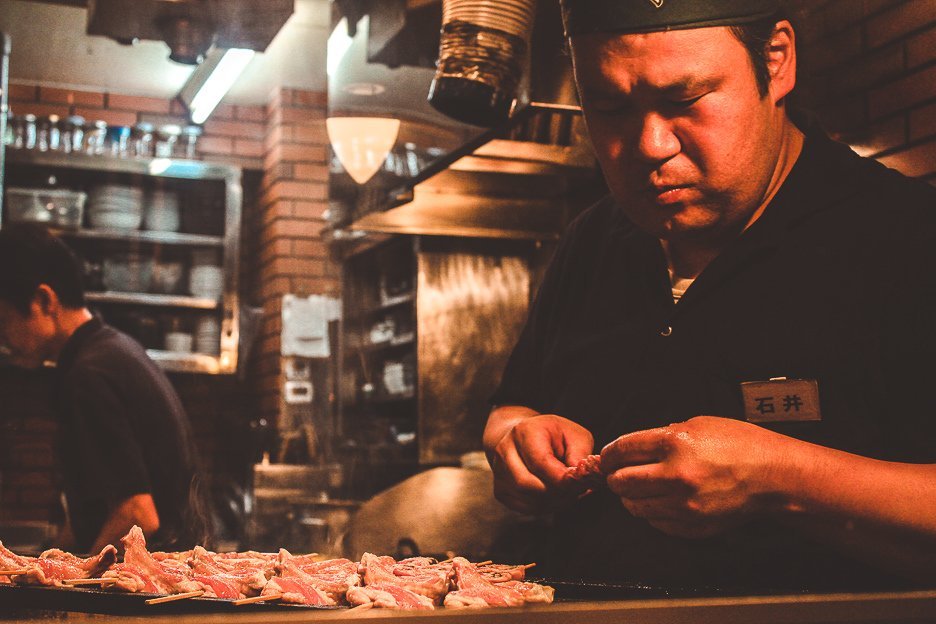
6. Soba
Likely to be a favourite amongst coeliacs, soba is the Japanese name for buckwheat. As opposed to ramen noodles and udon, soba noodles are thin buckwheat noodles and are completely gluten-free. Soba noodles are served either chilled with a dipping sauce or in a hot broth like a noodle soup.
Popular soba dishes include:
- Mori/Zabu soba (cold) – chilled noodles served with tsuyu dipping sauce (soup stock, water & mirin)
- Kake soba (hot) – soba noodles served in hot tsuyu broth (lower concentration)
- Kitsune soba (hot/cold) – soba noodles in hot clear broth with aburaage (thin fried tofu) on top
- Tempura soba (hot/cold) – soba noodles with dipping sauce or in hot broth with a serve of tempura on the side
- Tsukimi soba (hot/cold) – soba noodles in hot clear broth with some vegetables and a raw egg on top. Tsukimi translates as “moon watching” and the egg is said to resemble the moon
- Sansai soba (hot) – soba noodles in hot clear broth and wild vegetables on top
Best Place To Eat Soba
Tamawarai
Opening Hours
- Monday Closed
- Tuesday 11:30am - 2:30pm, 6:30pm - 8:30pm
- Wednesday 11:30am - 2:30pm, 6:30pm - 8:30pm
- Thursday 11:30am - 2:30pm, 6:30pm - 8:30pm
- Friday 11:30am - 2:30pm, 6:30pm - 8:30pm
- Saturday 11:30am - 7:30pm
- Sunday 11:30am - 4:30pm
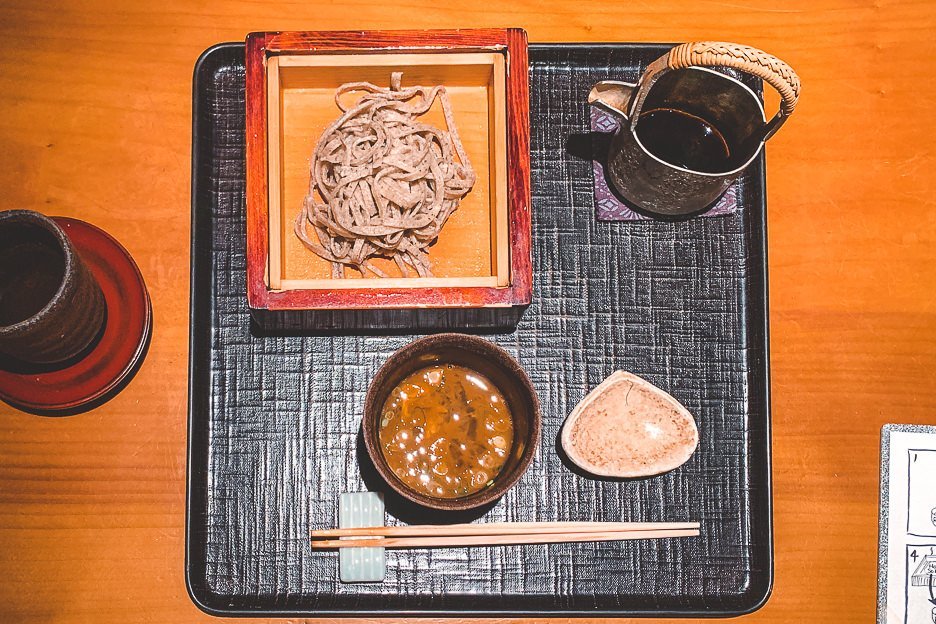
7. Traditional Japanese Breakfast
For travellers who grew up in the Western world or are more familiar with a continental breakfast, a traditional Japanese breakfast will be a new dining experience.
Typically, a traditional Japanese breakfast consists of steamed rice, miso soup, a protein source (e.g. grilled fish) and various side dishes. Popular sides include pickled vegetables, dried seaweed or fermented soybeans. To visitors, these foods could be conceived as a complete meal usually reserved for lunch or dinner. A Japanese breakfast is not intended to be heavy or to contain greasy, rich flavoured food.
Where To Try Traditional Japanese Breakfast in Tokyo:
Tsumugi
Opening Hours
- Monday 8:00am - 9:00pm
- Tuesday 8:00am - 9:00pm
- Wednesday 8:00am - 9:00pm
- Thursday 8:00am - 9:00pm
- Friday 8:00am - 9:00pm
- Saturday 8:00am - 9:00pm
- Sunday 8:00am - 9:00pm
8. Gyoza
The Japanese version of a dumpling, gyozas are little pockets of deliciousness. Originating in China (where they are called jiaozi), the Japanese gyoza have become a popular snack and side dish. Broadly speaking, gyoza and jiaozi are quite similar however, gyoza tend to be smaller than the Chinese potstickers and are less doughier with a thin wrapper.
Gyoza are typically filled with ground pork, nira chives, green onion, cabbage, ginger, garlic, soy sauce and sesame oil and served with a dipping sauce. There are three main types of gyoza:
- Yaki Gyoza (pan-fried) – most common type. Pan-fried on a skillet, water and cornstarch is poured over and the gyoza covered for a few minutes to create a thin crispy bottom on each individual gyoza
- Sui Gyoza (boiled) – served in a light broth
- Age Gyoza (deep-fried) – mainly found at Chinese restaurants and specialty gyoza restaurants
Best Gyoza in Tokyo:
Gyōza no Ōsama
Opening Hours
- Monday 11:15am - 2:45pm, 4:00pm - 8:45pm
- Tuesday Closed
- Wednesday 11:15am - 2:45pm, 4:00pm - 8:45pm
- Thursday 11:15am - 2:45pm, 4:00pm - 8:45pm
- Friday 11:15am - 2:45pm, 4:00pm - 8:45pm
- Saturday 11:15am - 8:45pm
- Sunday 11:15am - 8:45pm
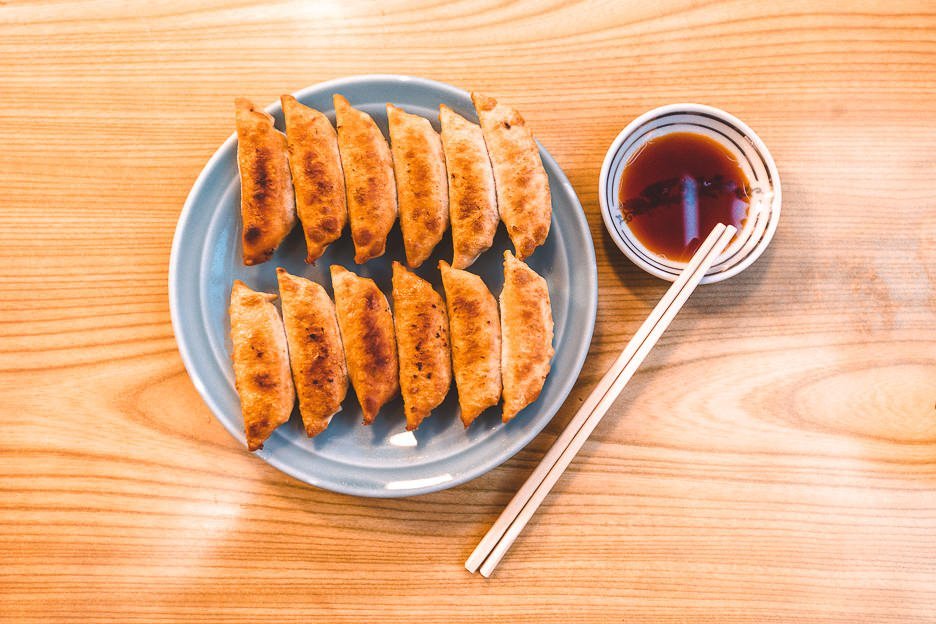
9. Tempura
Tempura are pieces of lightly-battered seafood and vegetables which are briefly deep-fried in hot oil. This fritter cooking technique was introduced to Japan in the 16th century by the Portuguese living in Nagasaki.
The batter is made from iced water and soft wheat flour. Often, eggs, baking soda, starch, oil and spices may be added. Tempura batter is traditionally whisked with chopsticks and left lumpy in the cold temperature to ensure it is fluffy and crisp when cooked.
Tempura is served in restaurants as a main dish or a side dish. Popular varieties include ebi (shrimp/prawn), sakana (fish), nasu (eggplant), kinoko (mushrooms) and satsumaimo (Japanese sweet potato).
Best Place To Eat Tempura in Tokyo:
Tempura Shimomura
Opening Hours
- Monday 12:00pm - 2:00pm, 5:30pm - 10:00pm
- Tuesday 12:00pm - 2:00pm, 5:30pm - 10:00pm
- Wednesday 5:30pm - 10:00pm
- Thursday 12:00pm - 2:00pm, 5:30pm - 10:00pm
- Friday 12:00pm - 2:00pm, 5:30pm - 10:00pm
- Saturday 12:00pm - 2:00pm, 5:30pm - 10:00pm
- Sunday Closed
10. Okonomiyaki / Monjayaki
Craving pancakes? It’s time to taste the Japanese version. Okonomiyaki is a popular pan-fried dish, affectionately known as Japanese savoury pancakes or pizza. It is mainly associated with the Kansai (Osaka) and Hiroshima areas of Japan but can be found throughout Japan.
The main ingredients of okonomiyaki are a wheat-flour based batter and cabbage. Assorted fillings include nagaimo (a type of yam), meat (typically pork belly), eggs, green onion and shrimp. Some okonomiyaki restaurants are grill-it-yourself establishments and others are diner-style where customers can watch the chefs prepare the savoury pancake/omelette/pizza.
The bowl of raw ingredients are mixed together and cooked on a hot griddle. Once cooked, okonomiyaki is topped with okonomiyaki sauce (similar to Worcestershire sauce), Japanese mayonnaise, aonori (dried seaweed flakes), katsuobushi (dried fish flakes) and pickled ginger.
Monjayaki is similar to okonomiyaki the additional dsahi (fish stock) and water added to the liquid ingredients makes the monjayaki consistency runnier than okonomiyaki.
Where To Eat Monjayaki in Tokyo:
Fūgetsu Tsukishima
Opening Hours
- Monday 11:00am - 11:00pm
- Tuesday 11:00am - 11:00pm
- Wednesday 11:00am - 11:00pm
- Thursday 11:00am - 11:00pm
- Friday 11:00am - 11:00pm
- Saturday 10:30am - 11:00pm
- Sunday 10:30am - 11:00pm
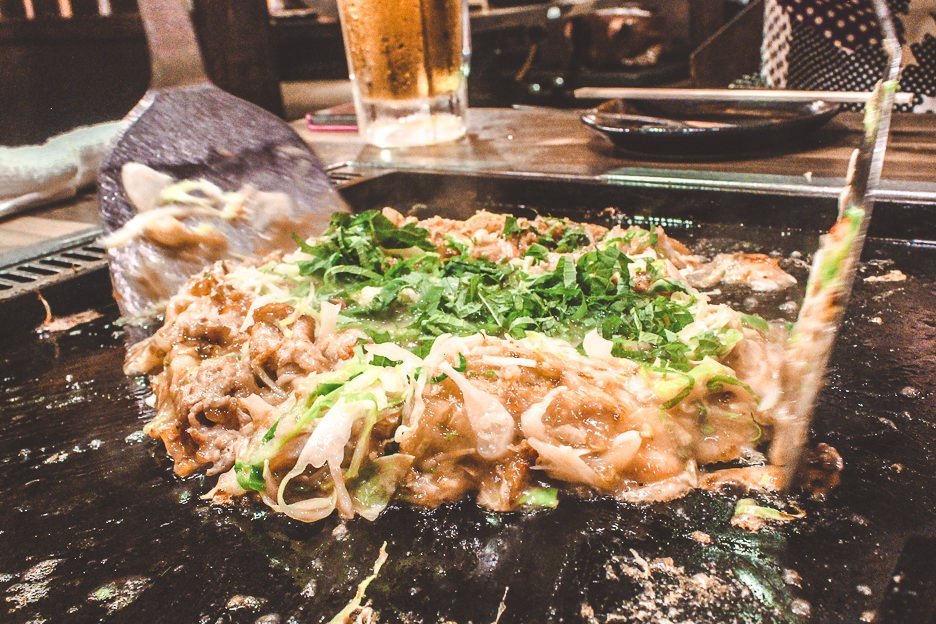
11. Onigiri
Onigiri is the best, cheapest snack food to eat on the go. Not to be confused with nigiri sushi, onigiri is made from plain white rice formed into triangular or cylindrical shapes and wrapped in nori (seaweed). The tasty rice balls are traditionally filled with salted salmon, tuna and pickled plums. Most Japanese convenience stores stock onigiri for as little as ¥120 and became one of Jasmine’s favourites when we travelled through Japan this year.
Onigiri is not a form of sushi as it is made from lightly salted plain white rice while sushi is made of rice with vinegar, sugar and salt.
Best Place To Eat Onigiri in Tokyo:
Onigiri Asakusa Yadoroku
Opening Hours (subject to rice availability)
- Monday 11:30am - 3:00pm, 6:00pm - 9:00pm
- Tuesday 11:30am - 3:00pm
- Wednesday 11:30am - 3:00pm
- Thursday 11:30am - 3:00pm, 6:00pm - 9:00pm
- Friday 11:30am - 3:00pm, 6:00pm - 9:00pm
- Saturday 11:30am - 3:00pm, 6:00pm - 9:00pm
- Sunday 6:00pm - 9:00pm
12. Bento
Bento boxes are Asian ready-made meals; a single-portion, takeaway meal where rice or noodles is the main staple food. A traditional box will also include fish or meat as well as pickled and cooked vegetables. No juice boxes – these you will need to buy separately!
You can find bento boxes practically everywhere in Japan: convenience stores, train stations, airports, supermarkets – anywhere you could buy food really.
Best Place To Find a Bento Box in Tokyo:
Pick one up at Tokyo Station before getting on the Shinkansen.
13. Sashimi
If you’re not particularly fond of seafood, then this Japanese delicacy may make you squirm. However, we would encourage you to take an adventurous step and taste some thinly sliced fresh raw food.
Seafood is most common but you may find other types of meat (such as beef, horse and deer) on the menu. Chefs cut sashimi at different thicknesses depending on the variety of the fish, its age and season.
Popular sashimi items include: sake (salmon), maguro (tuna), saba (mackerel), hamachi (yellowtail) and hotate-gai (scallop). Sashimi is commonly served with soy sauce and condiments such as wasabi, fresh ginger and fresh garlic.
Where You'll Find Sashimi in Tokyo:
It is often on the menu at sushi restaurants and may be part of a lunch or dinner set.
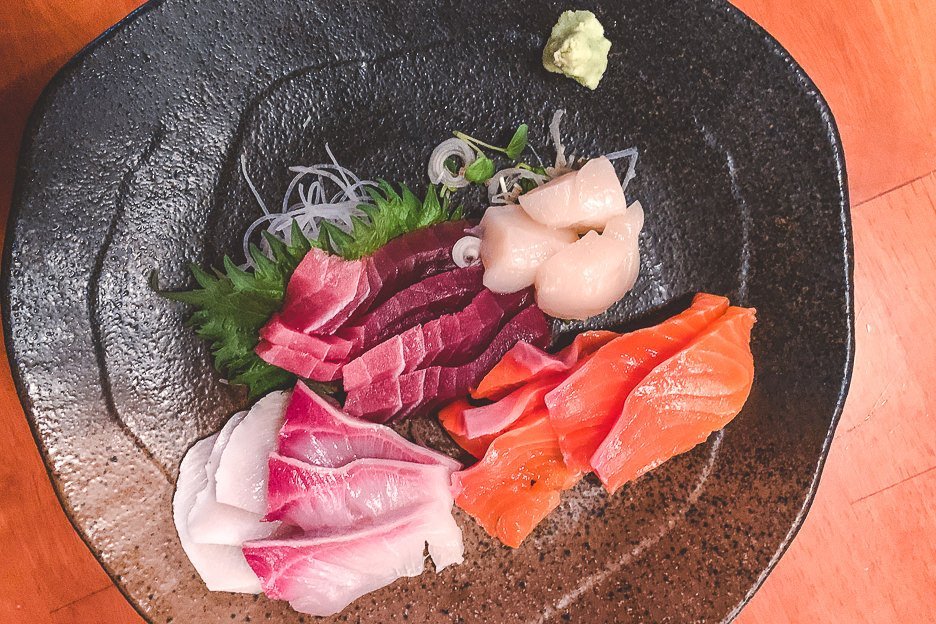
14. Miso Soup
Miso soup is an essential part of a traditional Japanese meal and most Japanese people consume it at least once a day. When you visit Japan, it is likely that miso soup will accompany your meal even if it’s not on the menu and regardless of whether you request it.
Miso soup is made with miso paste and “dashi” broth. Miso paste is made from fermented soybeans and salt and barley or rice. Red miso (fermented for a longer period) gives the miso soup a stronger, deeper flavour. White miso (fermented for a shorter period) offers a lighter, sweeter flavour and is favoured in the summertime. Dashi broth is commonly made of niboshi (dried baby sardines), kombu (dried kelp), katsuobushi (dried bonito, aka skipjack tuna), or hoshi-shiitake (dried shiitake).
Various ingredients may be added to miso soup including tofu (protein) or wakame seaweed (good for immune system).
Where You'll Find Miso Soup in Tokyo:
Literally everywhere!
15. Edamame
Edamame or immature green soybeans are a popular boiled snack with origins in East Asia. In Japan, they are usually blanched in weakly concentrated salt water and served without salt.
“Eda” means stem and “mam” is the word for beans, as during the Edo period, many street vendors would cook the pods while still attached to part of the stem. Edamame is a popular side dish in many Japanese izakaya restaurants with salt and garlic condiments. The Japanese enjoy the quintessential snack, particularly in summer with an ice-cold beer.
Edamame has become popular in the Western world as a “superfood” given their high protein and fibre content and are now often served in poke bowls.
Where You'll Find Edamame in Tokyo:
We suggest ordering Edamame in an izakaya (Japanese pub)
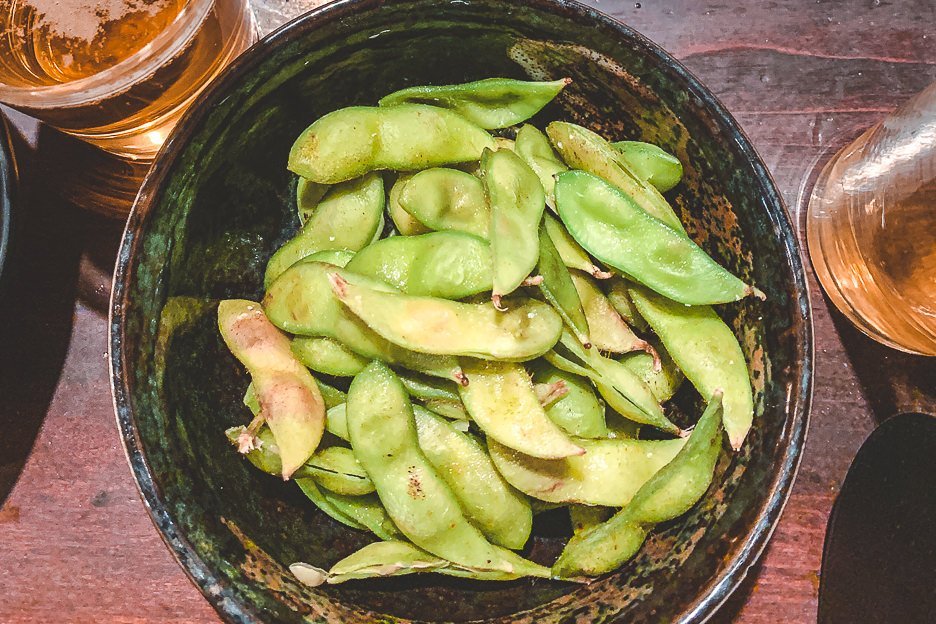
Famished? Share your cool Japanese food facts with us!
LIKE THIS POST? PIN IT AND SHARE IT!
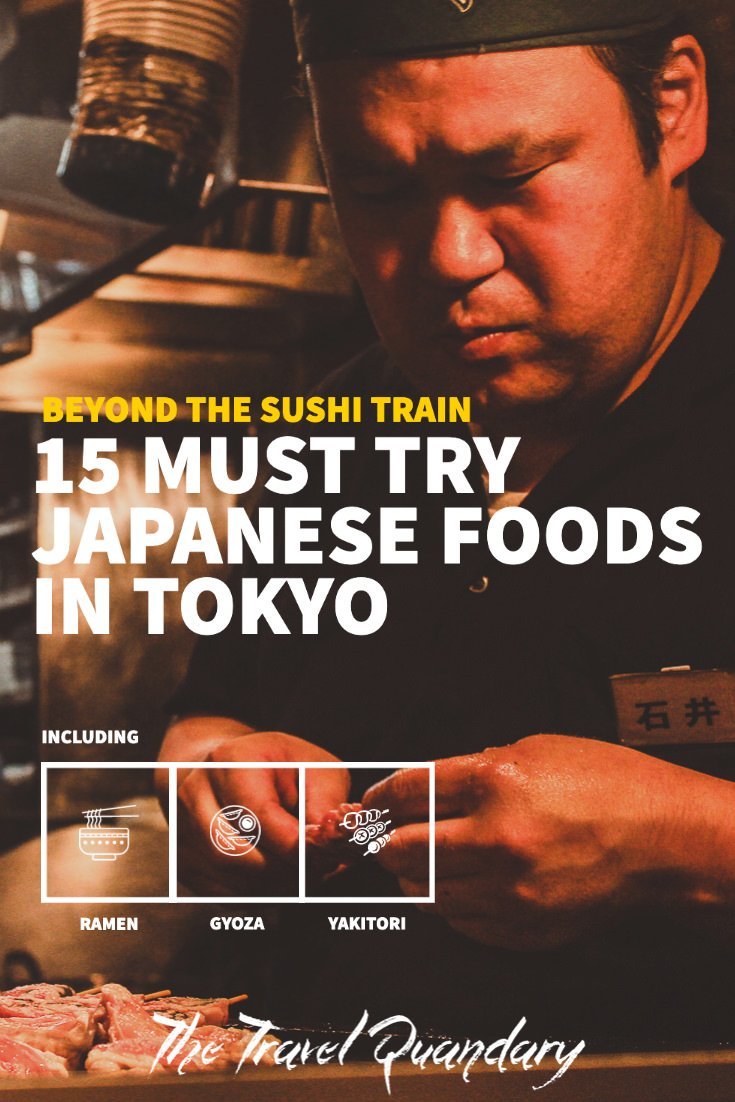
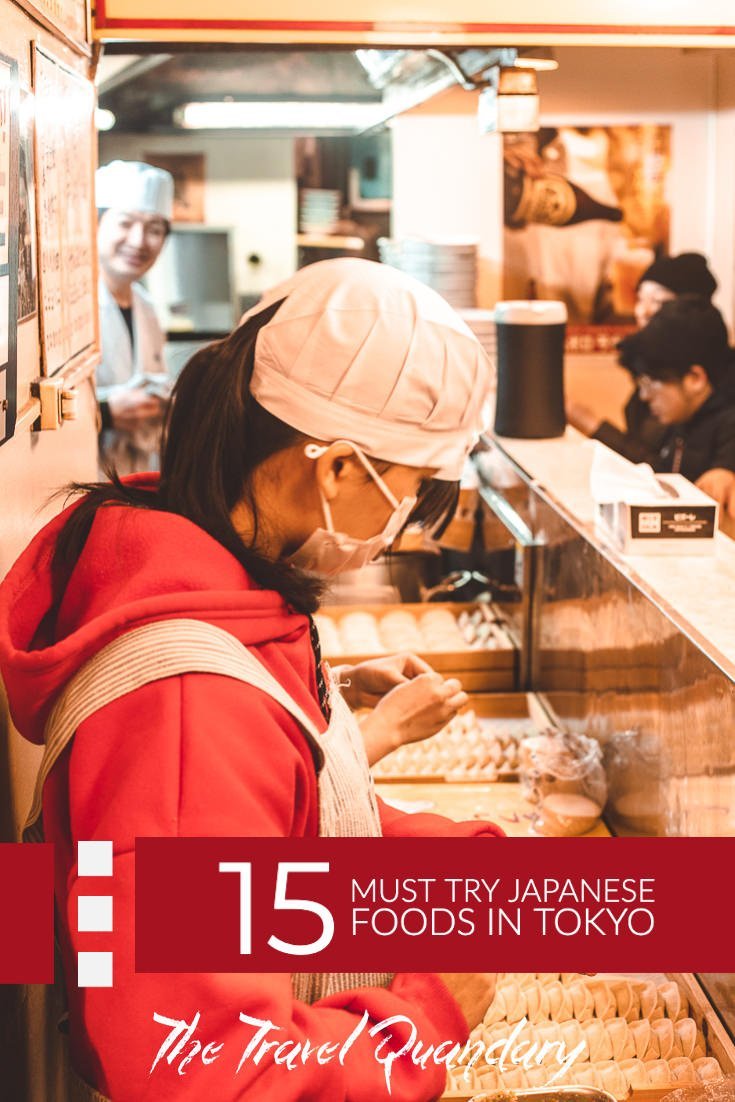

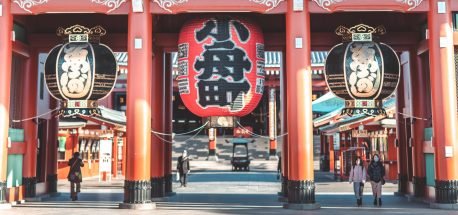
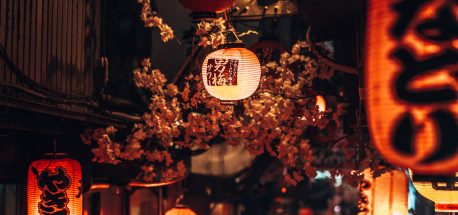
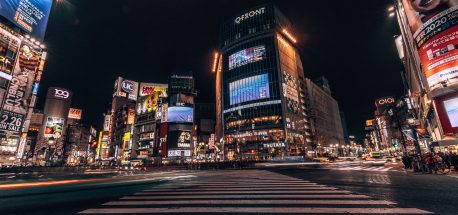
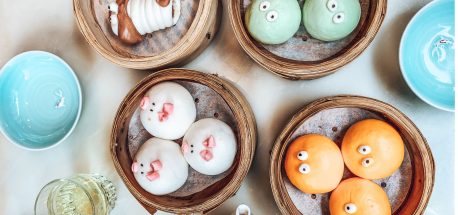

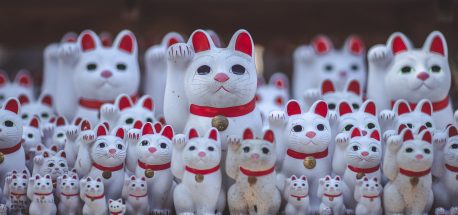


Sushi is my favorite food 🙂
Have not tried the Miso soup yet, must try that ones.
Thanks,
4 cats 2
Thank you so much for such an informative piece of information 🙂
If anyone interested similar one’s have a look here
Petreviewz
Thanks